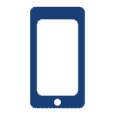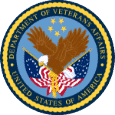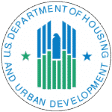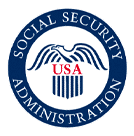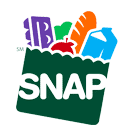Guides that explain how to use your android device effectively should include explanations of its basic elements, e.g., the desktop, the status bar, and other key features.
How to Use an Android Phone for Beginners
At the very least, you should become acquainted with the following items on your Android smartphone:
- Home screen: The home screen is like your standard computer desktop. With an Android device like a free smartphone, you can have multiple desktops or home screens. At first, you’ll just see one home screen when you unlock your new device. All the essential icons are located there.
- Navigation bar: At the bottom of the home screen is the navigation bar. It varies from phone to phone but typically includes three elements: the “back” button, “home” button, and “recently apps used” button. Simply tap any of the icons (buttons) on the nav bar to take you to your last screen, the home screen, or to the app you were using most recently.
- Status bar: At the top of the home screen, you’ll see standard information on the status bar, including the time, signal strength, notifications, and remaining battery power.
- App drawer: You’ll see a circle or rectangle filled with white or gray dots. That is the app drawer icon; here, you can access all the apps that came loaded with your phone and others you download and put there. You’ll be using this button a lot, so note where it is and try it out a few times as soon as you open your phone.
- Notifications: One of the coolest things about Android devices is the notification bar. Whenever you have a Facebook alert, text message, or an unread email, you’ll see a notification icon on the left-most side of the status bar up top. Pull it down, and you’ll see all the notifications at once.
- Dock: This is also known as the “favorites tray.” You can choose whatever icons or apps you want for the dock, and they’ll always show up, regardless of which home screen you are looking at. The dock allows you to have access to your most-used apps and icons.
- Quick settings
Important Safety Tips
There are two major safety tips for new smartphone users:
1)Keep the device in good working order;
2)keep your data safe from thieves and hackers.
Consider doing the following to maintain a workable phone:
- Keep your phone away from water and heat: Moisture and excessive heat are your phone’s biggest enemies. If you drop it in water, pull it out as soon as possible and dry it off. When it’s hot outside, be careful to not leave the device in your car or in direct sunlight. Heat won’t melt your phone immediately, but it will cause the battery to become inefficient and can damage the circuitry.
- Never let others use your phone: Before phones were data-connected devices, it was no big deal to let someone borrow your phone. Nowadays, lending your phone to anyone is like giving them your ATM card or Social Security number. Unless it’s a person you fully trust, e.g.,a close relative or long-time friend, avoid letting anyone use your smartphone.


